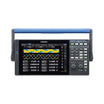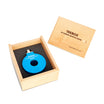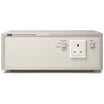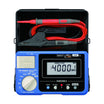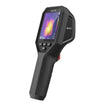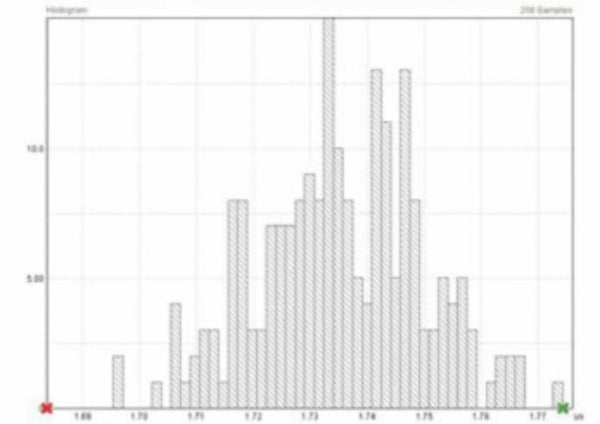
Tektronix TVA3000 TimeView analysis software
Use our chat for personal support or contact us via +45 31 33 18 19 or salg@GOmeasure.dk
- Displays Dynamic Frequency Changes over Time
- Displays Residual FM and AM on up to 40 GHz Carriers
- Detects Frequency Changes Every 4 μs in Real Time (Every 10 ns with repetitive sampling)
- Statistical Distribution Histogram
- FFT Analysis
- Smoothing Mode
- Zero Dead-time Measurements
Discover the possibilities
More information
Description
Tektronix TVA3000 TimeView analysis software
The Tektronix TVA3000 TimeView™ software displays the Data from any Tektronix Timer/Counter in a “versus Time” format.Transform your Timer/Counter into a Modulation Domain Analyzer
With the Tektronix TimeView™ analysis software, you can transform your Tektronix FCA or MCA Series timer/counter into a Modulation Domain Analyzer (MDA). An MDA displays frequency versus time, just like an oscilloscope displays voltage versus time. With an MDA on your bench, you will be able to completely characterize your signal.Dynamically analyze your signal's amplitude and frequency

The modulation domain (f versus t) complements the time domain (v versus t) and the frequency domain (v versus f) to provide a complete picture of your signal.
Amplitude and frequency content are the two most important properties of any signal. Oscilloscopes are used to analyze changes in amplitude over time but not changes in frequency. The traditional tool for analyzing signal frequency content is the spectrum analyzer. However, this can only find static frequency components or give an averaged view of dynamic (changing) frequencies.
The modulation domain is the “missing domain” that complements the time and frequency domains. TimeView is the software that works with the Tektronix Timer/Counter/Analyzer FCA3000, FCA3100, and MCA3000 Series (through USB or GPIB) and converts them into a Modulation Domain Analyzer.
Simple to setup and easy to use
Using TimeView is as simple as connecting your Tektronix FCA or MCA Series timer/counter to your PC. Tektronix timer/counters offer both a USB port and a GPIB port to simplify this connection. Once connected to TimeView, you remotely control the product with all the same setup and analysis features found on the product.The fast sampling front-end of your timer/counter will sample the frequency (or time, or phase, or voltage if selected) then transfer that data to your PC. TimeView will then post-process the data and display the results in a variety of formats, depending on your selection:
- Modulation domain (frequency versus time)
- Continuous time stamp (trigger events versus time)
- Time domain (voltage versus time for repetitive signals)
- Any measured parameter versus time
Graphs can be printed, and settings and results are stored as ASCII-files that are easily imported in various programs such as Microsoft Excel for further analysis.
Analyze your device with the industry's only Modulation Domain Analysis software
You will find the MDA to be a very versatile tool, especially suited for R&D engineers, but an MDA also fits in the RF service lab and in metrology labs. You have all the same measurement capabilities and analysis tools as the product, but with the ability to view and analyze your signals over time. A few applications that otherwise would be impossible, or very expensive to carry out are:- Visualize frequency-hopping patterns in FHSS frequency-agile communication, missile guidance systems
- Measure frequency stability per individual channel in TDMA communication systems
- Measure frequency droop on individual channels in frequency-hopping systems
- Analyze chirp radar performance
- Measure pulse jitter and view distribution histograms
- Calibrate frequency-sweep signals
- Calibrate intentional modulation (FM or FSK)
- Discover phase jumps in synchronization clocks
- Measure frequency settling times of VCOs
- Characterize start-up/warm-up of oscillators
Analysis Examples
Jitter (RMS and peak-peak) and noise is quantified with distribution histograms.

The FFT diagram reveals the modulation frequency, whether intended or unwanted.
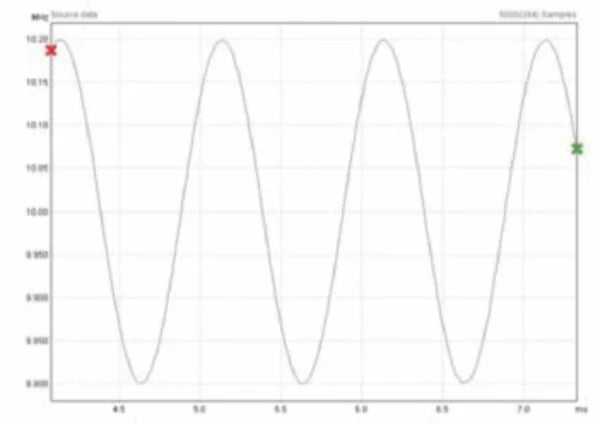
The Modulation Domain view shows frequency versus time. Shown here is a 10 MHz signal with 1 kHz FM.

ADEV versus Zero Dead-time measurement reveals poor performance of a synthesized function generator.
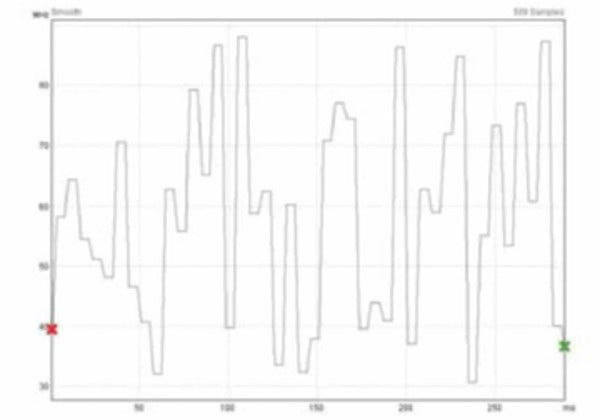
Frequency hopping in high-quality military troop radio.

Frequency hopping in low-cost commercial radio channel scanner.
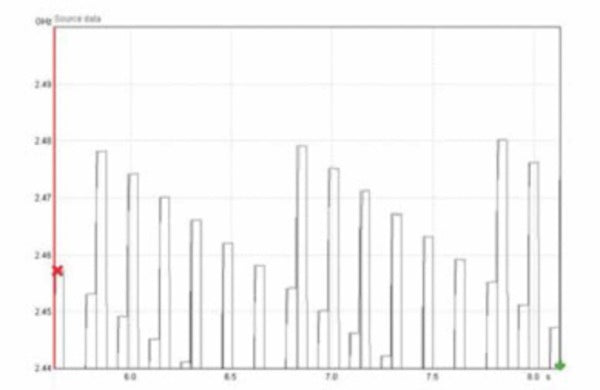
Frequency hopping in 2.4 GHz WLAN (FHSS).
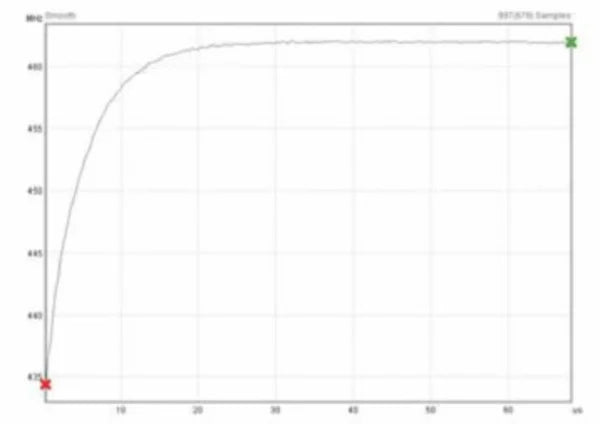
Frequency settling of VCO after step change of input voltage.
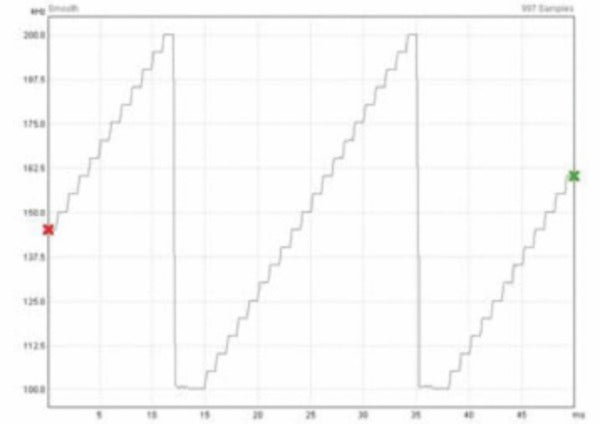
Specifications
Documents
Tektronix TVA3000 TimeView analysis software
Tektronix TVA3000 DatasheetOptions
Video
Tektronix TVA3000 TimeView analysis software
The Tektronix TVA3000 TimeView™ software displays the Data from any Tektronix Timer/Counter in a “versus Time” format.Transform your Timer/Counter into a Modulation Domain Analyzer
With the Tektronix TimeView™ analysis software, you can transform your Tektronix FCA or MCA Series timer/counter into a Modulation Domain Analyzer (MDA). An MDA displays frequency versus time, just like an oscilloscope displays voltage versus time. With an MDA on your bench, you will be able to completely characterize your signal.Dynamically analyze your signal's amplitude and frequency

The modulation domain (f versus t) complements the time domain (v versus t) and the frequency domain (v versus f) to provide a complete picture of your signal.
Amplitude and frequency content are the two most important properties of any signal. Oscilloscopes are used to analyze changes in amplitude over time but not changes in frequency. The traditional tool for analyzing signal frequency content is the spectrum analyzer. However, this can only find static frequency components or give an averaged view of dynamic (changing) frequencies.
The modulation domain is the “missing domain” that complements the time and frequency domains. TimeView is the software that works with the Tektronix Timer/Counter/Analyzer FCA3000, FCA3100, and MCA3000 Series (through USB or GPIB) and converts them into a Modulation Domain Analyzer.
Simple to setup and easy to use
Using TimeView is as simple as connecting your Tektronix FCA or MCA Series timer/counter to your PC. Tektronix timer/counters offer both a USB port and a GPIB port to simplify this connection. Once connected to TimeView, you remotely control the product with all the same setup and analysis features found on the product.The fast sampling front-end of your timer/counter will sample the frequency (or time, or phase, or voltage if selected) then transfer that data to your PC. TimeView will then post-process the data and display the results in a variety of formats, depending on your selection:
- Modulation domain (frequency versus time)
- Continuous time stamp (trigger events versus time)
- Time domain (voltage versus time for repetitive signals)
- Any measured parameter versus time
Graphs can be printed, and settings and results are stored as ASCII-files that are easily imported in various programs such as Microsoft Excel for further analysis.
Analyze your device with the industry's only Modulation Domain Analysis software
You will find the MDA to be a very versatile tool, especially suited for R&D engineers, but an MDA also fits in the RF service lab and in metrology labs. You have all the same measurement capabilities and analysis tools as the product, but with the ability to view and analyze your signals over time. A few applications that otherwise would be impossible, or very expensive to carry out are:- Visualize frequency-hopping patterns in FHSS frequency-agile communication, missile guidance systems
- Measure frequency stability per individual channel in TDMA communication systems
- Measure frequency droop on individual channels in frequency-hopping systems
- Analyze chirp radar performance
- Measure pulse jitter and view distribution histograms
- Calibrate frequency-sweep signals
- Calibrate intentional modulation (FM or FSK)
- Discover phase jumps in synchronization clocks
- Measure frequency settling times of VCOs
- Characterize start-up/warm-up of oscillators
Analysis Examples
Jitter (RMS and peak-peak) and noise is quantified with distribution histograms.

The FFT diagram reveals the modulation frequency, whether intended or unwanted.

The Modulation Domain view shows frequency versus time. Shown here is a 10 MHz signal with 1 kHz FM.

ADEV versus Zero Dead-time measurement reveals poor performance of a synthesized function generator.

Frequency hopping in high-quality military troop radio.

Frequency hopping in low-cost commercial radio channel scanner.

Frequency hopping in 2.4 GHz WLAN (FHSS).

Frequency settling of VCO after step change of input voltage.



